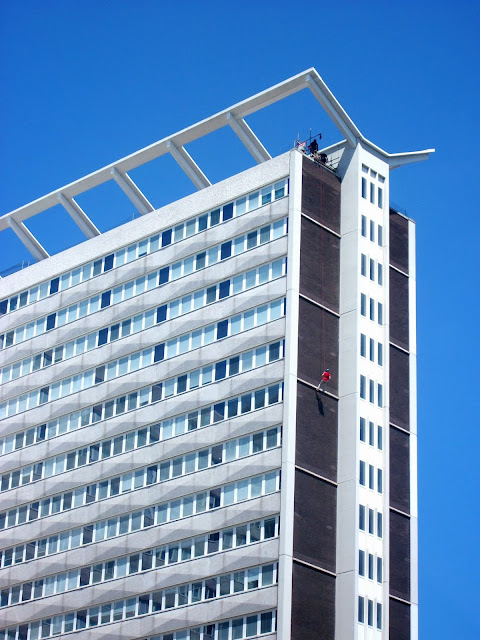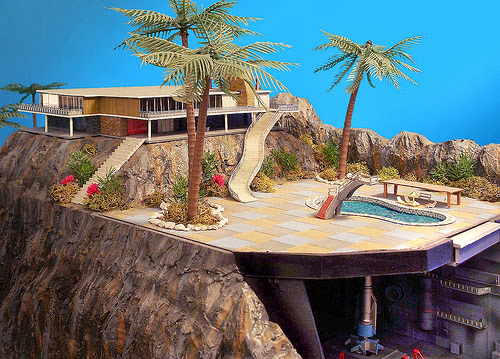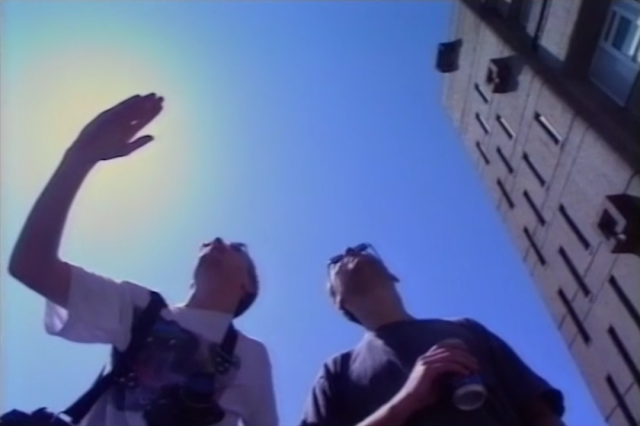2015 will be the centenary of Ladybird Books, but it wasn't until the launch of their Peter and Jane books, the Key Word Reading Scheme, in 1964 that they really became household names. They eventually became part of Penguin and stopped producing their trademark little board-covered books in the late 1990s.
The rise of Ladybird books in the postwar period coincided with the
rebuilding of towns and cities, and as a result many of the books, so
associated with a cosy pipe-smoking suburban view of Britain, actually
showcased a rather more go-ahead modernist view of life. Here's ten
classic images from their books that make up something like a hidden
Ladybird Book of Modernism.
 |
|
1. Here's modernism at its most raw: the steel frame of a block, from People at Work: The Builder.
Illustration by John Berry, published 1965.
|
 |
|
2. The Story of Nuclear Power
is probably Ladybird's most ambitious and complex book, and contains some
fantastic diagrams. Here's an illustration of one of the first wave of British
nuclear power stations, drawn by Robert Ayton in 1972.
|
 |
|
3. Robert Ayton again supplied the illustrations for the 1961 Ladybird Achievements book Great Inventions, here showcasing an
airport radar.
|
 |
| 4. Here's a veritably Corbusian view of Homes, from 1975, illustrated by Bernard Robinson, a fellow Croydonian. |
 |
| 5. The high-tech How It Works book on The Telephone has everything a 1972 child could wish for, from lots of orange to a Trim Phone. It also features the Post Office Tower. Illustration again by Bernard Robinson. |
 |
| 6. Here's London Airport in 1961, from The Ladybird Book of London, illustrated by John Berry. The airport was renamed Heathrow in 1965. |
 |
| 7. How It Works: The Computer has become a classic Ladybird book because of its depiction of 1979's finest technology. Bernard Robinson again did the honours here, with a great display of mainframe computers. |
 |
| 8. The Ladybird Book of Motor-Cars from 1960 was illustrated by David Carey, and shows a country in transition in quite a rough and ready way – well, for Ladybird, at any rate. |
 |
| 9. John Berry again here, with a pristine motorway service station image from his book The Road Makers, published in 1967. |
 |
| 10. And so we end on one of my favourite modern buildings, BBC
Television Centre, now sadly being knocked about to be turned into a
hotel, flats and god knows what. These are the end papers from another How It Works book, Television, from 1968, illustrated by our old friend Bernard Robinson. Beautiful stuff. |
Read the second part of my Ladybird odyssey
here and the concluding part
here.




















Just tell me making calls on a mobile is half the fun of that video-cabinet jobby... fabulous!. What HAVE we lost?... when did all the joy get sucked out of it all... the future was meant to be an adventure!
ReplyDeleteI think I probably either owned or read all of these books at school. What’s really striking is the moral certainty; that things were improving and that we were building a better future
ReplyDelete